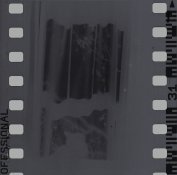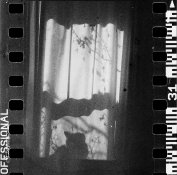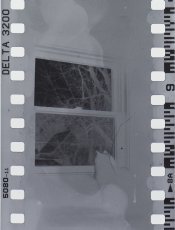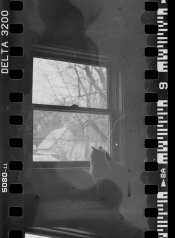rhiannatruex
Member
Delta 3200, shot at 3200. Developed with HC110 dilution B, 12 min @ 68F. Agitation every 30s, used patterson tank + reels. Water as stop bath, fixed with Ilford rapid fix for 4 minutes, washed well (maybe could have been longer)
Some images show only the black (white on negative) spots and some have a bizarre haze around them. Two examples below.
This is my second attempt at developing - is it possible the funky haze is a light leak from when I was spooling? Or is it likely to be chemical based? What is causing these crazy little spots? My last attempt at developing the spots were much worse, and I assumed poor washing of the fixer, resulting in the fixer drying on the negative.
(excuse the cat hair)
Some images show only the black (white on negative) spots and some have a bizarre haze around them. Two examples below.
This is my second attempt at developing - is it possible the funky haze is a light leak from when I was spooling? Or is it likely to be chemical based? What is causing these crazy little spots? My last attempt at developing the spots were much worse, and I assumed poor washing of the fixer, resulting in the fixer drying on the negative.
(excuse the cat hair)









 But yes, it's possible to have film jump the grooves in the reel and touch back of one turn to the front of the next -- but in my experience, when this happens it's much worse than that fluid-cloud type mark on the second negative above. To my eye, that and the artifacts along the sprockets suggest some liquid mixed in with the developer, reducing activity where it hasn't diluted out yet (and possibly fixing away halide where it hadn't been diluted at all). Leftover blix from previous attempt seems a likely cause for this.
But yes, it's possible to have film jump the grooves in the reel and touch back of one turn to the front of the next -- but in my experience, when this happens it's much worse than that fluid-cloud type mark on the second negative above. To my eye, that and the artifacts along the sprockets suggest some liquid mixed in with the developer, reducing activity where it hasn't diluted out yet (and possibly fixing away halide where it hadn't been diluted at all). Leftover blix from previous attempt seems a likely cause for this.